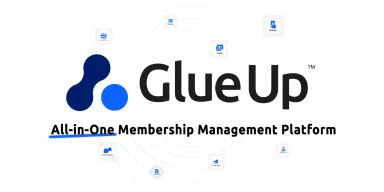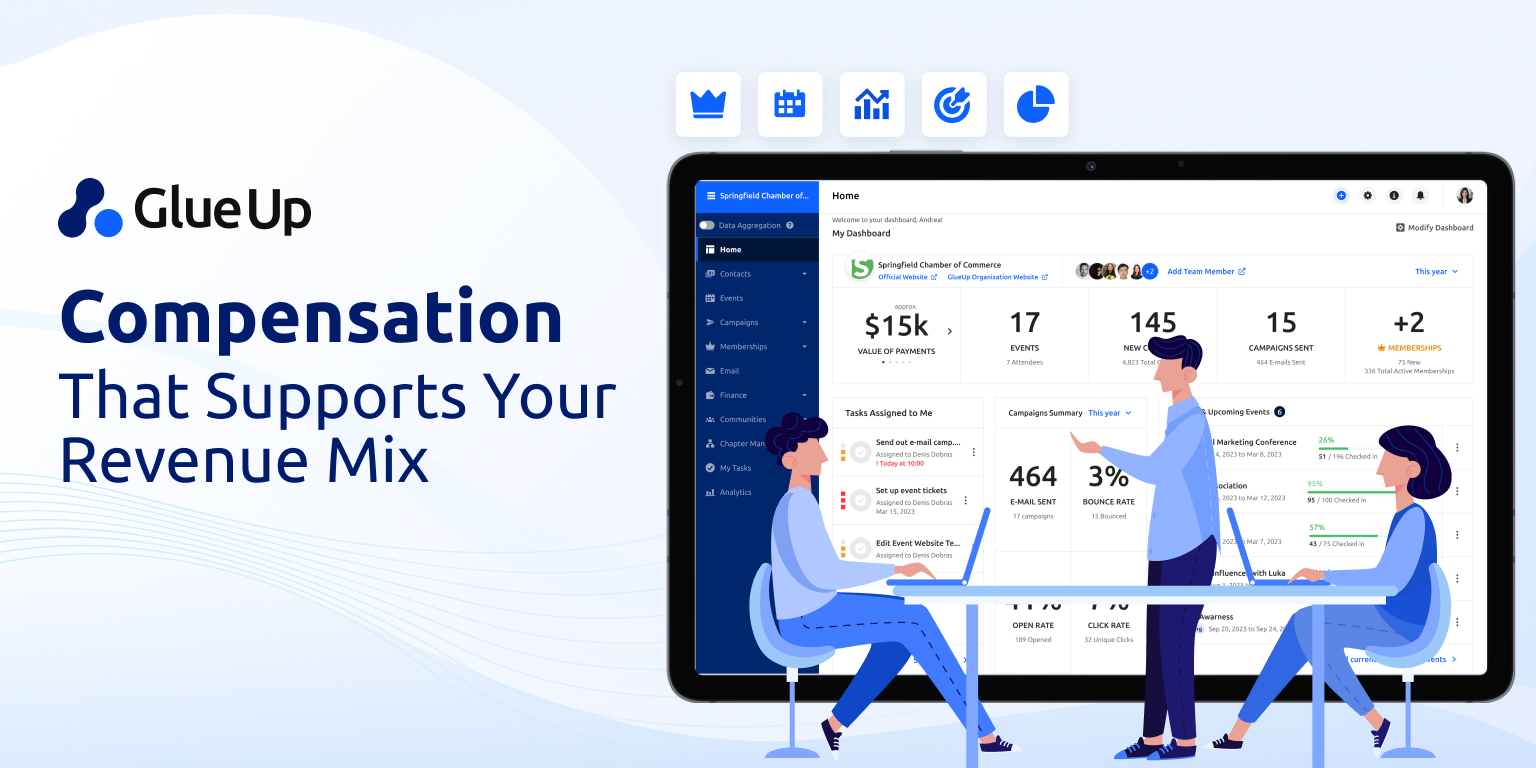
Revenue stability depends on visibility. A structured weekly revenue report and stand-up agenda help associations align teams, track progress, and respond to revenue fluctuations before they grow into problems. Reviewing renewals, sponsorships, and event income weekly builds consistency and accountability across departments. It’s not about reporting numbers; it’s about managing outcomes and improving forecast accuracy.
In this post, you’ll learn how to structure your weekly revenue report, design an agenda that drives real discussion, and track performance metrics that turn insights into predictable growth.
Or, you can skip the read and get on a call with one of our experts to get a live demo of our AI-powered association management software .
Key Takeaways
- Weekly revenue reviews transform reporting into a management discipline that drives predictable growth.
- Reviewing KPIs such as retention rate, ARPM, and forecast accuracy weekly keeps teams aligned and accountable.
- A unified weekly revenue report ensures every department operates from one version of the truth.
- Leading indicators like renewal outreach and sponsor proposals provide early visibility into performance risks.
- Automation and centralized dashboards eliminate manual reconciliation and improve data reliability.
- Glue Up enables zero-friction reporting by uniting CRM, finance, events, and analytics into one workflow.
Why Weekly Revenue Reviews Drive Predictable Growth
If you only review numbers monthly, you manage outcomes rather than improve them. A disciplined weekly revenue report creates visibility, accountability, and operating rhythm. Top performers are 50% more likely to run weekly pipeline reviews with managers, a cadence that reinforces action and reduces slippage. The barrier is often data quality, since only 35% of sales professionals fully trust their data, which is why a weekly hygiene loop matters as much as the meeting itself.
Ready to turn those numbers into action? Let’s look at how to create rhythm, manage revenue as a system, and spot leading indicators before results slip:
Create Rhythm Between Strategy And Execution
Use a single-page snapshot that compares week, month-to-date, and quarter-to-date performance against the target. Anchor the conversation in gaps to plan, risk flags, and next actions. Keep commentary to facts, drivers, and owner commitments due by the next stand-up.
Manage Revenue As A Continuous System
Unify renewals, sponsorships, events, and new memberships into a single report so everyone sees the same truth. Pipe data from CRM and finance to avoid version conflicts. Treat definitions as policy, not preference, so ARPM, churn, and forecast stages mean the same thing to every team.
Identify Leading Indicators Early
Track signals that move before revenue: renewal outreach completed, event registrations pacing, sponsor proposals sent, invoices outstanding, and win-rate by stage. Trends over two to three weeks tell you where to intervene before results deteriorate.
Structuring an Effective Weekly Revenue Report
Your report should be brief, comparable week to week, and impossible to debate. You are designing management instrumentation, not a slide deck.
Core sections
Executive summary: Target, actual, variance, and confidence level for the month and quarter.
Revenue mix: Dues, sponsorships, events, and other streams with week-over-week deltas.
Pipeline view: New, progressing, and at-risk opportunities with stage aging and next steps.
Renewals: Due this week, due this month, completed, slipped, and reason codes.
Cash and billing: Invoices sent, collected, outstanding, and days to pay.
Risks and blockers: Top three issues, owner, and date to resolve.
Metric standards
Retention rate and ARPM by segment.
Forecast accuracy at the opportunity and aggregate level.
Win rate by stage and by source.
Cycle time for renewals and new sales.
Event ROI and sponsor renewal pacing where applicable.
Cadence and ownership
Publish the report by a fixed time, ideally the afternoon before the stand-up. Lock definitions and source systems. Assign an owner for each line item so status becomes a commitment, not commentary.
Make Weekly Revenue Management a System, Not a Meeting with Glue Up
A weekly report and stand-up only work when they run on rails. You need one workflow, one dataset, and one agenda that connects membership, events, sponsorships, and finance. That is how you turn a check-in into a control system for predictable growth.
Where Glue Up’s Association Management Software fits: as your all-in-one layer for disciplined weekly revenue operations.
Association CRM and pipeline: one source for renewals, sponsors, and new membership deals, with Smart Lists for at-risk segments.
Membership and invoicing: automated renewals, billing, and collections that update your report without manual reconciliation.
Events and sponsorships: registration pacing, sponsor deliverables, and post-event ROI surfaced in the same dashboard.
Finance views: payments, outstanding invoices, and cash pacing aligned to your weekly targets.
Reporting and agendas: standardized weekly revenue report templates and workflows so owners can update metrics before the stand-up.
If you want weekly conversations to produce measurable outcomes, connect the report, the data, and the agenda to a single system. Book a demo to see how Glue Up enables a zero-friction weekly revenue process that improves forecast accuracy, increases renewal velocity, and keeps growth on plan.
Frequently Asked Questions
Why should associations hold weekly revenue reviews instead of monthly ones?
Weekly reviews provide faster feedback loops, improve accountability, and allow teams to correct issues before they affect quarterly performance or forecasting accuracy.
What should a weekly revenue report include?
It should summarize total revenue, pipeline health, renewals, sponsorship status, event income, and outstanding payments, all compared against targets and historical trends.
How long should a weekly revenue stand-up take?
Keep it under 30 minutes. The meeting’s purpose is to review progress, identify blockers, and assign next steps — not to revisit old discussions.
Who should attend a weekly revenue stand-up?
Include team leads from membership, events, sponsorship, and finance. This ensures full visibility and shared accountability across revenue streams.
How can automation improve weekly revenue reporting?
Automation connects data from CRM, finance, and events, updating your reports in real time. This reduces manual work and ensures decisions are based on accurate, current information.
How does Glue Up support weekly revenue management?
Glue Up’s integrated platform automates renewals, consolidates revenue dashboards, and provides ready-to-use reporting templates that align your entire revenue team around one unified system.
Quick Reads
- How to Build a Revenue Engine with Association Management Software
- Add-On Cart for Member Retention & Growth
- Simplify Multi-Currency Payment Posting for Community Chapters With Glue Up + Paygage
- AI Automation for Event Registration & Beyond
- Integrating AI into CRM for Membership Growth
- How to Build a Chapter Event Calendar
- What Is All-In-One Association Software?
- AI-Powered Member Check-In Software


